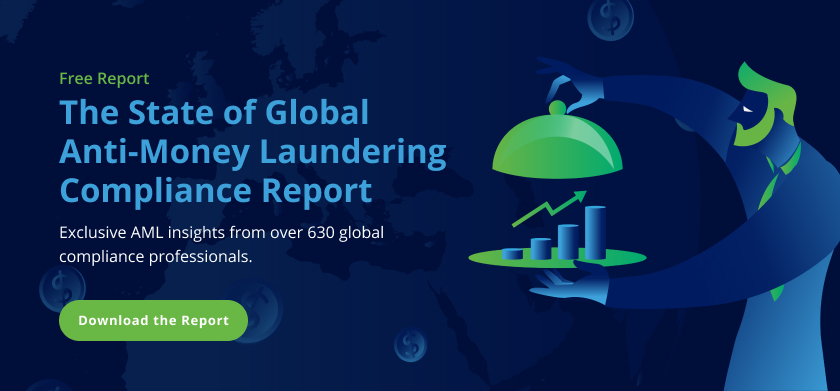
Criminals use a wide array of fraud tactics to steal other people’s money. But what can criminals do with the money that they obtained fraudulently? They’ll need to launder the money into legitimate banking channels in order to profit from their activities. For this reason, argues Feedzai’s Brian Ferro, banks and financial institutions must think of fraud and anti-money laundering (AML) as supporting goals. Learn how banks can start to detect money laundering activity at the onboarding stage during know your customer (KYC) and customer due diligence (CDD) at customer onboarding – and beyond.
A full transcript of Brian Ferro’s guide to how fraud prevention and AML work together follows:
Brian Ferro: During my 15 years at the bank, one of the things I heard quite frequently was, “You can’t have fraud without money laundering.”
How to Trigger Money Laundering Charges
Once a fraudster scams or gets money from somebody, the next thing that they do is typically use it. Unless a fraudster takes the money and buries it in their backyard (which is highly unlikely) they’re going to do something with it. Now, the minute they do something with it, that then warrants a money laundering charge.
Typically with those money laundering charges, not only does law enforcement have the ability to go in and take a look at where that money has gone. They also have the ability to use those money laundering charges to add additional years, fines, or punishment to the person who stole the money or obtained the money fraudulently.
It also allows law enforcement or the prosecutor or the government to be able to take that money and any commingled funds with the fraudsters’ legitimate funds. So it’s asset forfeiture. Therefore, they can give restitution back to the victims or help pay for the cost of the investigation. So it’s a pretty important tool from the law enforcement standpoint.
But beyond just the layering of funds, beyond the money laundering charges, let’s scratch at the fraud and AML aspect just a little bit.
KYC/CDD Doesn’t Stop at Onboarding
What we can really focus on is the onboarding and expected behavior aspect of customer due diligence (CDD). Can you take a look at people that are bad actors and stop them from initially coming into the institution through the onboarding process? Can you verify their identity? Can you look at the occupation that they have, and the region that they live in, and come up with conclusions as to what the expected activity is for that individual? Then, based on the activity that’s taking place in their accounts, make a determination as to whether or not this activity fits what is expected.
So for example, if you have an individual – let’s say they are a baker. You would expect to have normal activity associated with baking. Maybe it’s the purchase of raw materials like flour, sugar, or equipment for that matter. Then on top of it, you would expect credits coming in from customers too. Probably low-dollar, maybe an occasional high-dollar, that is associated with a catering or large purchase.
But you certainly wouldn’t expect massive transactions coming in from different areas of the world. You wouldn’t expect those transactions to come internationally. You won’t be expecting hundreds of thousands of transactions for a small mom-and-pop-type business.
How Fraud Prevention and AML Catches Criminal Activity
If you take a look at fraud and AML and the intersection there, not only is there the ability to look at the suspicious movement of funds, the layering of funds after the fraudulent activity. But also from a preventative standpoint of what is the expected behavior of these individuals that have been onboarded into your institution.
So it’s something you can take a look at and be able to utilize all the information they provided to you from onboarding and then ongoing monitoring perspective of what to expect from that type of behavior.
Share this article:
Related Posts
0 Comments9 Minutes
Enhancing AML Transparency with Smarter Data
Doesn’t it seem like new financial threats crop up in the blink of an eye? That’s why…
0 Comments10 Minutes
Enhancing Anti-money Laundering Systems Architecture
A speaker at a financial crime conference I recently attended summed up the problem with…
0 Comments8 Minutes
Avoid AML False Positives in 3 Easy Steps
High false positive rates are considered the norm for many financial institutions. But…


